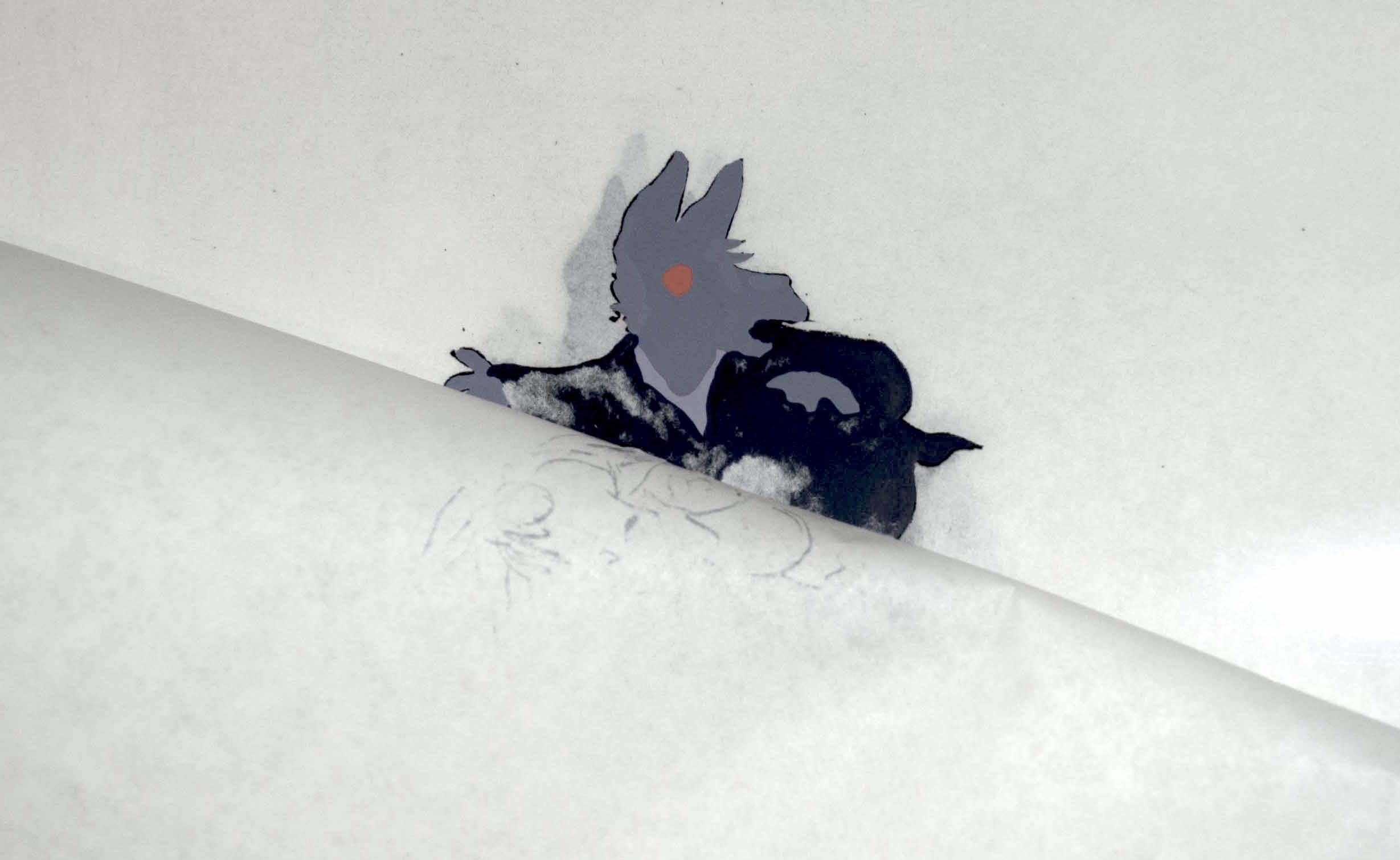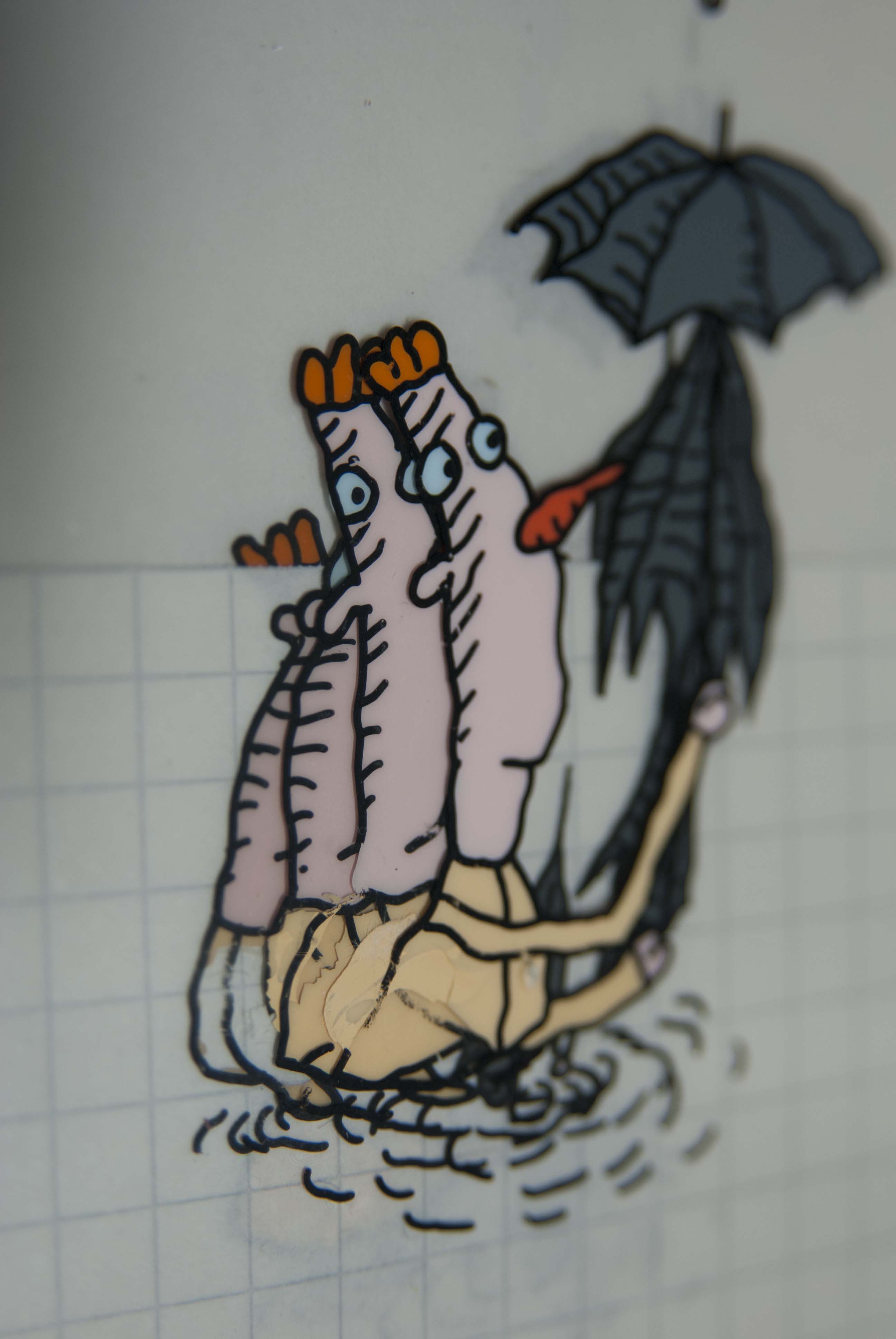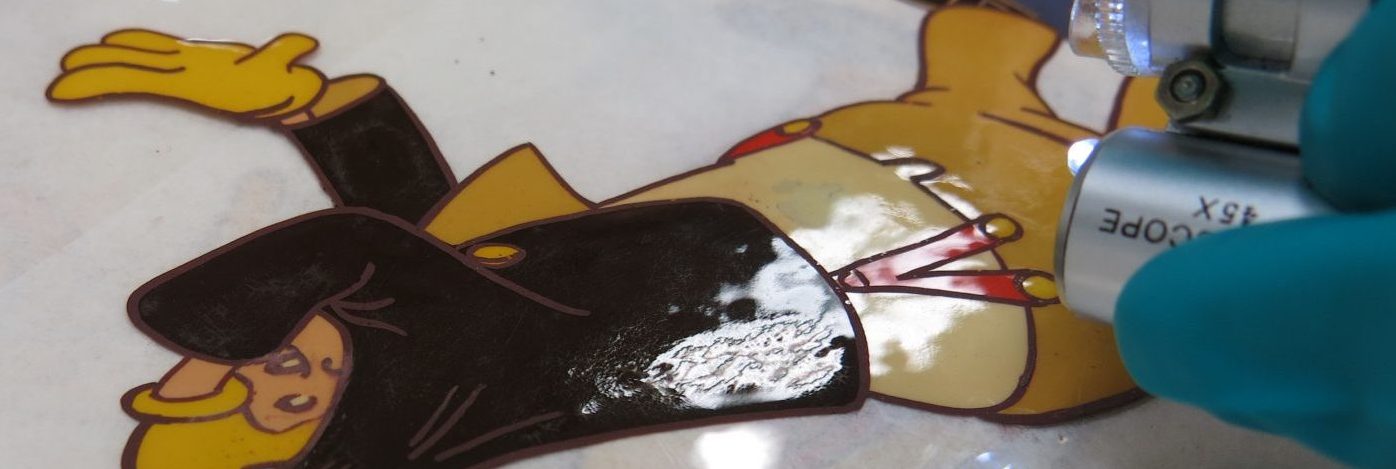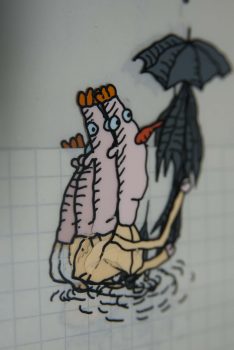In the animation artwork collection of the EYE Film Museum, we regularly find cels with paint layers that were once sticky and are now stuck. In the stacks of animation artwork, these paint layers have glued themselves to other cels or adjacent papers. When you try to separate them, you run the risk of damaging the paint layer or “skin” the paper surface. Because we do not want to cause any more damage, we leave these cels as we found them: stuck and unavailable for research or display.

Paint stuck to an animation drawing in the artwork for A Midsummer’s Night Dream (1983) by Studio Kozelka. In the process of trying to remove the cel from the animation drawing, the surface of the paper was severely damaged. (Artwork in the collection of the EYE Film Museum)
The use of clean-up animation as interleaving
Animators often used the final preparatory drawings (clean-up animation) as interleaving between the painted cels. In the final stage of drawing, the cel is placed over the animation drawing and the lines of the drawing are traced with ink on the frontside of cel (inking). The cel is then flipped and the colour is applied on the backside. To use the cleaned up drawings as interleaving is a logical consequence of the production process because every cel comes with its own cleaned up animation drawing. The interleaving protects the cels form sticking to each other, but when the paint sticks to the interleaving, both the animation drawing as well as the paint layer can easily get damaged. And because the animation drawing is often directly underneath the painted image, it is most likely affected.

Damaged paint layer as a result of separating stuck cels used in the production of the film The Water People (1992) by Paul Driessen. If you look closely, you can see the fibres that are torn from the surface of the interleaving paper and embedded in the paint layer. (Artwork in the collection of the EYE Film Museum)
The Paint on Cel Animation Questionnaire
We do not know what causes the paint to stick. Maybe — at a certain point in the past — the paint got too warm and started to become soft and sticky. Or maybe the paint did not have sufficient time to dry during the production process. It could be that some paint formulations tend to stick more then others. Latex wall paint, for example, is a paint that is often used to reduce production costs and it is notoriously slow drying.
Paint analyses could give us some answers, but animators who actually worked with paint on cellulose acetate could give us more useful and complete information. This is why we developed a questionnaire asking animators about their experiences with paints on cels during and shortly after the production of the film. The questionnaire addresses Dutch animators or animators who have worked in the Netherlands and is drawn up in Dutch, yet the outcome will hopefully give a better insight in the composition and behaviour of paint layers on animation cels in general.


Spelling error report
The following text will be sent to our editors: